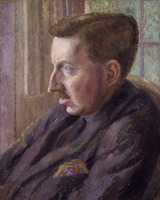In organizing a piece, narrative writers tell the story in terms of scenes linked chronologically, creating interest and suspense, pulling the reader forward through the story. Commentary, explanation and description can be added to the scenes or placed around them as long as they don’t detract from the narrative momentum, or profluence, as John Gardner referred to it in The Art of Fiction. Such stories have a beginning, middle and end, although not necessarily in that order. They arise out of a conflict that is resolved by the end of the piece.
Good story ideas for narrative writing meet the following criteria:
1) BASED ON SCENE – Organized around one or more scenes. Unlike a feature story, these pieces should be composed almost entirely of scenes. There can be passages of narrative summary that provide background information, but these should be incorporated into or around the scene.
2) EMPHASIZE CHARACTER – Elucidation of character lies at heart of these stories. They can convey information, but this should be done through the personalities central to the story.
3) ENCOURAGE CURIOSITY – Writers should appeal to readers’ curiosity, pulling them along with suspenseful storytelling, not letting them go until the end.
4) CONFLICT AND RESOLUTION FORMAT – The story has to be organized around a conflict, whether an external one like climbing a mountain, or an internal one of overcoming stuttering. Most of the best stories have a conflict that embraces both the internal and the external. Example: John has to overcome his fear to climb the mountain. Melissa meets a supportive speech therapist who helps her speak normally.
For more on story ideas, consider signing up for my spring writing class, The Nature of Narrative.

 The Writer's Workshop
The Writer's Workshop 











